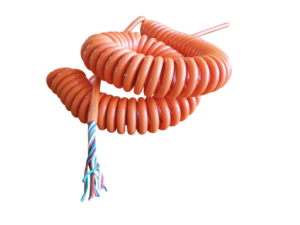 How do you know if you need a thermoplastic or thermoset jacket on your cable or cord? Thermosplastic-also known as PVC/urethane-based jackets-and thermoset jackets-also known as neoprene or rubber based-offer different characteristics that may be important for your application. The prefix “thermo” highlights the difference in the way each material responds to heat. This is important to consider, as many different materials, from Pro-Tect Plastics to cabling, will have different durabilities to heat.
How do you know if you need a thermoplastic or thermoset jacket on your cable or cord? Thermosplastic-also known as PVC/urethane-based jackets-and thermoset jackets-also known as neoprene or rubber based-offer different characteristics that may be important for your application. The prefix “thermo” highlights the difference in the way each material responds to heat. This is important to consider, as many different materials, from Pro-Tect Plastics to cabling, will have different durabilities to heat.
You can begin to narrow down your choice by asking these questions:
- Will the cable or cord be subjected to heat? Thermoset materials begin life as a liquid that becomes a solid (“sets”) when heated or mixed with a catalyst. Once they solidify, thermoset materials won’t melt. Therefore, a cord with a thermoset jacket may be better for high-heat applications. Whitney Blake’s Fire-Tuff® is a thermoset cord that retains its shape under extremely high heat.
- Will the cable or cord need to be reshaped or recycled? Thermoplastics can be heated and reshaped multiple times (they are “plastic” in the sense of “pliable”), and they offer high strength, shrink resistance, and bendability. Therefore, thermoplastics may be better for applications where those characteristics are an advantage.
- Does the cable or cord need to withstand compressive force? As coiled cords, for example, thermoplastics require more force to stretch but may not retract properly to their original shape if stretched too far. Because thermoset materials resist reshaping, they may be the better choice to withstand compressive force.
- Does the cable or cord need to resist chemicals? Again, thermosets may outperform thermoplastics in their chemical resistance and overall durability.
- Do you need to make a prototype? Thermoplastics are less shrink resistant than thermosets, so thermosets may be the better choice for prototyping because they will better retain the shape of the mold.
Cords with the Underwriters Laboratory (UL) code of S or SJ are assumed to have thermoset jackets unless a T or E occurs after the SJ. A thermoplastic jacket is indicated by the T and the E indicates a cord with a thermoplastic elastomer jacket.
The five differences mentioned above offer a baseline for deciding between thermoset and thermoplastic. But the use of composites can create a material that combines characteristics of both thermoplastics and thermosets. For more information, please contact Whitney Blake directly. Our Research & Development team and our highly trained sales staff are on hand to help determine the exact cables, harnesses, cords, and assemblies that will fit your needs.

